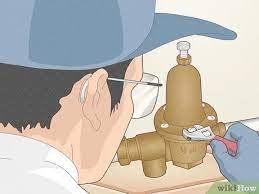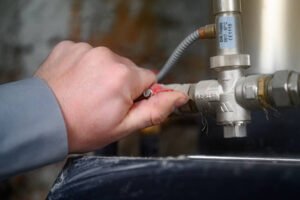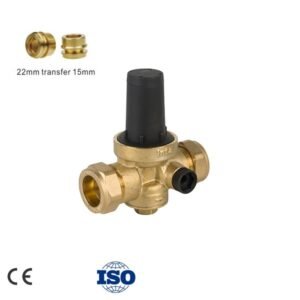Pressure regulators are essential components in various applications, ranging from household appliances to industrial systems. They are designed to maintain a consistent output pressure despite fluctuations in the input pressure. However, leaks in pressure regulators can compromise their functionality, leading to inefficiencies and potential safety hazards. Understanding why a pressure regulator might leak is crucial for troubleshooting and maintaining optimal performance. In this article, we will explore the common causes of pressure regulator leaks, how to diagnose them, and preventive measures to keep your systems running smoothly.
Anatomy of a Pressure Regulator
To understand why a pressure regulator might leak, it’s helpful to know its basic components and how it works. A typical pressure regulator consists of:
- Inlet and Outlet Ports: The inlet port receives the high-pressure fluid or gas, while the outlet port delivers it at a regulated, lower pressure.
- Valve Seat and Orifice: The valve seat and orifice control the flow of fluid or gas.
- Spring and Diaphragm: The spring and diaphragm work together to sense and adjust the pressure. The spring’s tension is set to the desired pressure, and the diaphragm moves in response to changes in pressure.
- Adjusting Screw: This component allows for manual adjustment of the output pressure.
Common Causes of Pressure Regulator Leaks
1. Worn Seals and O-Rings
Seals and O-rings are critical in preventing leaks. Over time, these components can degrade due to wear and tear, exposure to harsh chemicals, or extreme temperatures. When seals and O-rings lose their elasticity or become brittle, they can no longer provide a tight seal, resulting in leaks. Regular inspection and timely replacement of these components are essential for preventing leaks.
2. Corrosion and Erosion
Corrosion and erosion can severely impact the integrity of a pressure regulator. Corrosion occurs when materials react with their environment, often in the presence of moisture or corrosive chemicals, leading to material degradation. Erosion, on the other hand, results from the constant flow of abrasive fluids or gases, wearing away the internal surfaces. Both corrosion and erosion can create pathways for leaks. Using corrosion-resistant materials and coatings can mitigate these issues.
3. Improper Installation
Incorrect installation of a pressure regulator can lead to leaks. Common installation errors include misalignment, over-tightening or under-tightening of connections, and improper use of sealing compounds. Ensuring that the regulator is installed according to the manufacturer’s specifications and using the correct tools and techniques can prevent installation-related leaks.
4. Overpressure Conditions
Exposing a pressure regulator to pressures beyond its designed capacity can cause damage and leaks. Overpressure can deform internal components, damage seals, and compromise the valve seat. Installing pressure relief devices and regularly monitoring system pressure can prevent overpressure conditions.
5. Physical Damage
External physical damage from impacts, vibrations, or temperature extremes can compromise a pressure regulator’s integrity. Damage to the housing, connections, or internal components can result in leaks. Protecting the regulator from physical harm and ensuring it is mounted securely can help avoid such issues.
6. Aging and Fatigue
Like all mechanical devices, pressure regulators have a finite lifespan. Over time, materials can fatigue, and components can wear out. Aging regulators are more prone to leaks due to weakened materials and compromised seals. Regular maintenance and replacement of aging regulators are crucial for maintaining system integrity.
7. Contaminants and Debris
Contaminants and debris in the fluid or gas stream can accumulate inside the regulator, causing blockages and wear. These particles can damage internal components and lead to leaks. Installing filters and strainers upstream of the regulator can prevent contaminants from entering the system.
Diagnosing Pressure Regulator Leaks
Accurately diagnosing the source of a pressure regulator leak is essential for effective repair. Here are some methods to identify leaks:
1. Visual Inspection
Carefully examine the regulator and its connections for visible signs of leaks, such as fluid or gas escaping, corrosion, or damaged components.
2. Pressure Testing
Use pressure gauges to check for inconsistencies in pressure readings. A significant drop in pressure can indicate a leak.
3. Soap Solution Test
Apply a soap solution to the regulator and its connections. Bubbles forming at specific points indicate the presence of a leak.
4. Ultrasonic Leak Detection
Use ultrasonic leak detection equipment to identify leaks that are not visible to the naked eye. This method is particularly useful for detecting small or internal leaks.
5. Isolation Testing
Isolate sections of the system to pinpoint the exact location of the leak. This can help determine whether the leak is within the regulator or elsewhere in the system.
Repairing Pressure Regulator Leaks
Once the source of the leak is identified, appropriate repair measures can be taken:
1. Seal and O-Ring Replacement
Replace worn or damaged seals and O-rings with new ones. Ensure that the replacements are compatible with the regulator and the fluid or gas being regulated.
2. Corrosion Treatment
If corrosion is the cause of the leak, clean the affected areas and apply corrosion-resistant coatings. In severe cases, replacing the corroded components may be necessary.
3. Proper Reinstallation
Reinstall the regulator correctly, ensuring all connections are tight and properly aligned. Use appropriate sealing materials and follow the manufacturer’s guidelines.
4. Component Replacement
Replace damaged or worn-out components such as diaphragms, springs, and valves. Ensure that the replacements are of high quality and compatible with the regulator.
5. System Upgrades
If the leak is due to overpressure conditions, consider upgrading the system with pressure relief valves and monitoring systems to prevent future occurrences.
Preventing Pressure Regulator Leaks
Prevention is always better than cure. Here are some tips to prevent pressure regulator leaks:
1. Regular Maintenance
Perform regular maintenance checks on pressure regulators to identify and address potential issues before they lead to leaks.
2. Quality Installation
Ensure that pressure regulators are installed correctly by skilled technicians using appropriate tools and techniques.
3. Use of Filters
Install filters and strainers upstream of the regulator to prevent contaminants and debris from entering the system.
4. Corrosion Protection
Use corrosion-resistant materials and coatings to protect the regulator from harsh environments.
5. Pressure Monitoring
Monitor system pressure regularly and ensure that it remains within the regulator’s rated capacity.
6. Timely Replacement
Replace aging and worn-out regulators promptly to prevent leaks caused by material fatigue.
Conclusion
Pressure regulator leaks can disrupt operations and pose safety risks in various applications. By understanding the common causes of leaks, diagnosing them accurately, and implementing preventive measures, you can maintain the reliability and efficiency of your pressure regulation systems. Regular maintenance, proper installation, and the use of high-quality components are key to preventing leaks and ensuring the longevity of your pressure regulators. Stay proactive and vigilant to keep your systems leak-free and functioning optimally.






